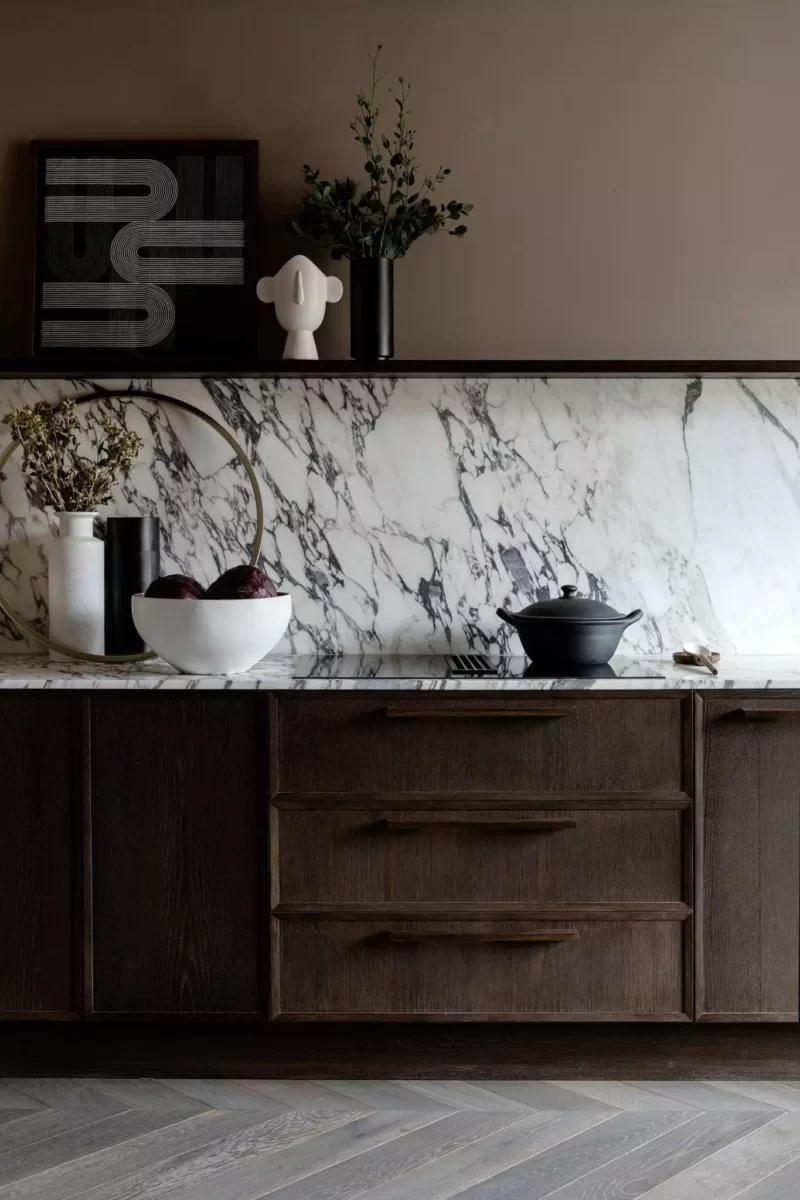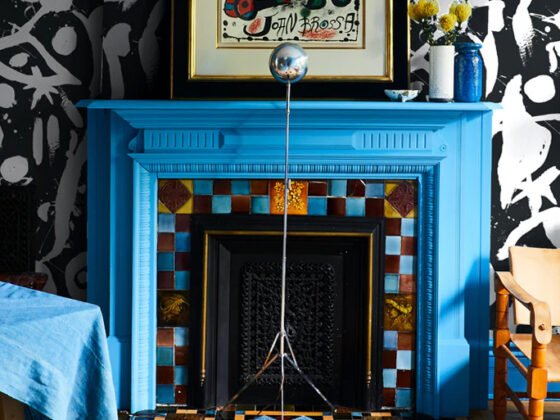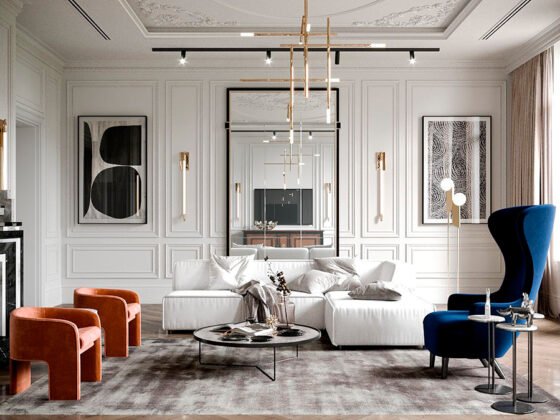It is undeniable that a new trend of kitchens without upper cabinets is emerging. This look is becoming increasingly prevalent in design magazines, Instagram, and Pinterest.
This has become a new and trendy approach in the kitchen design. There are various reasons why you may choose to forgo upper cabinets. You may be drawn to this style for its aesthetic appeal or for practical reasons. However, as with any design choice, there are advantages and disadvantages to consider.
Advantages Of A Kitchen Without Upper Cabinets
Enhance Spaciousness: Eliminating upper cabinets can alleviate the cramped and heavy ambiance that many kitchens acquire from an overabundance of cabinets, particularly in smaller kitchens.
Minimize Clutter: Fewer cabinets necessitate fewer items to fill them up. Embrace your inner minimalist – sell, donate or give away things you didn’t realize you had and only keep what you truly need and use. You’ll feel so much lighter for it!
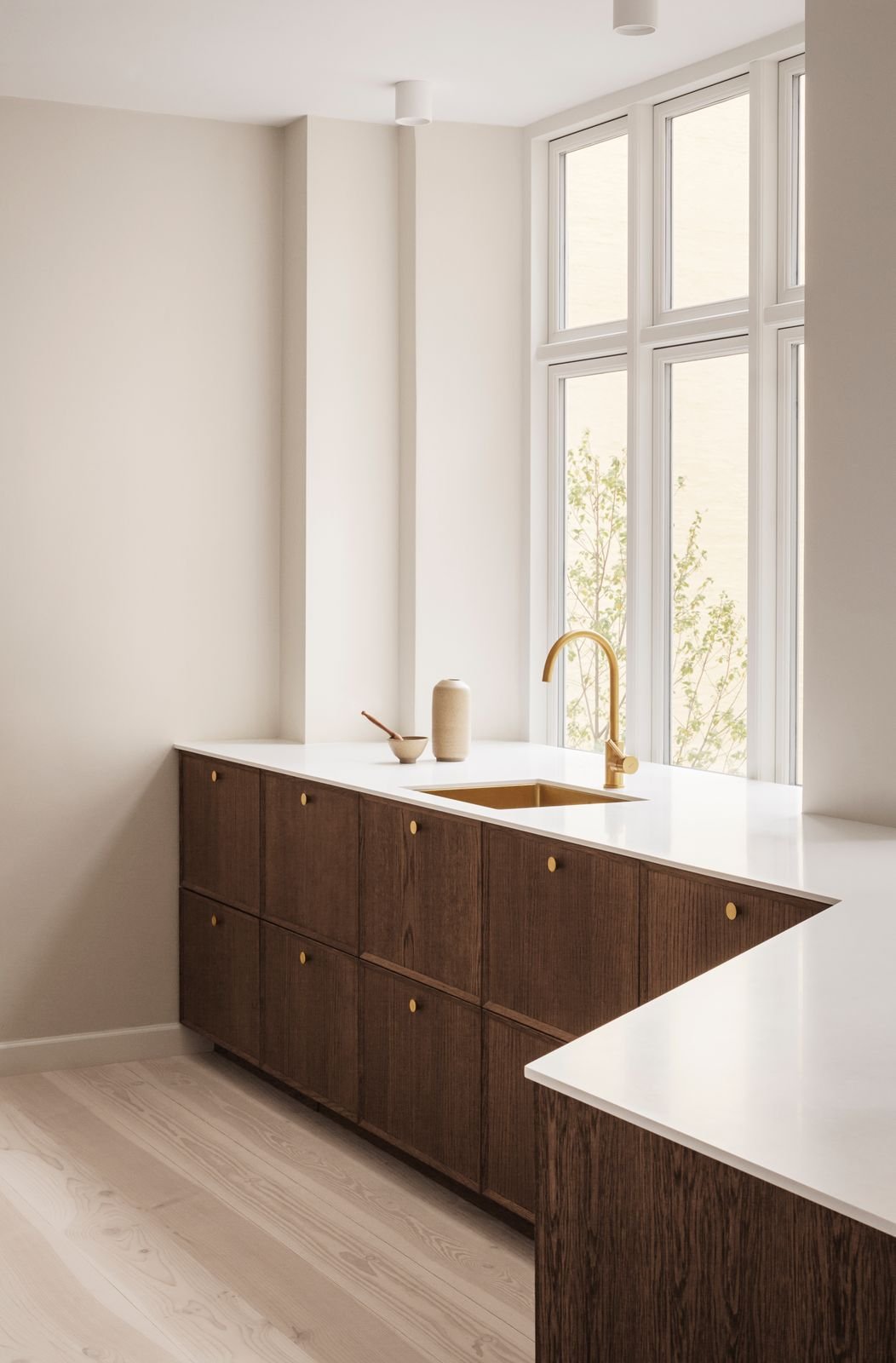
Maximize Natural Light: Without upper cabinets, natural light can fill the kitchen more easily, particularly around windows and skylights, creating a brighter and airier environment. Who wouldn’t want that?
Feature a Stunning Backsplash: Eliminating upper cabinets provides the chance to create a striking backsplash feature, whether it’s a magnificent glazed tile extending to the ceiling or a gorgeous slab of countertop material. With wall cabinets removed, the backsplash can serve as a magnificent focal point and add visual interest to the kitchen.
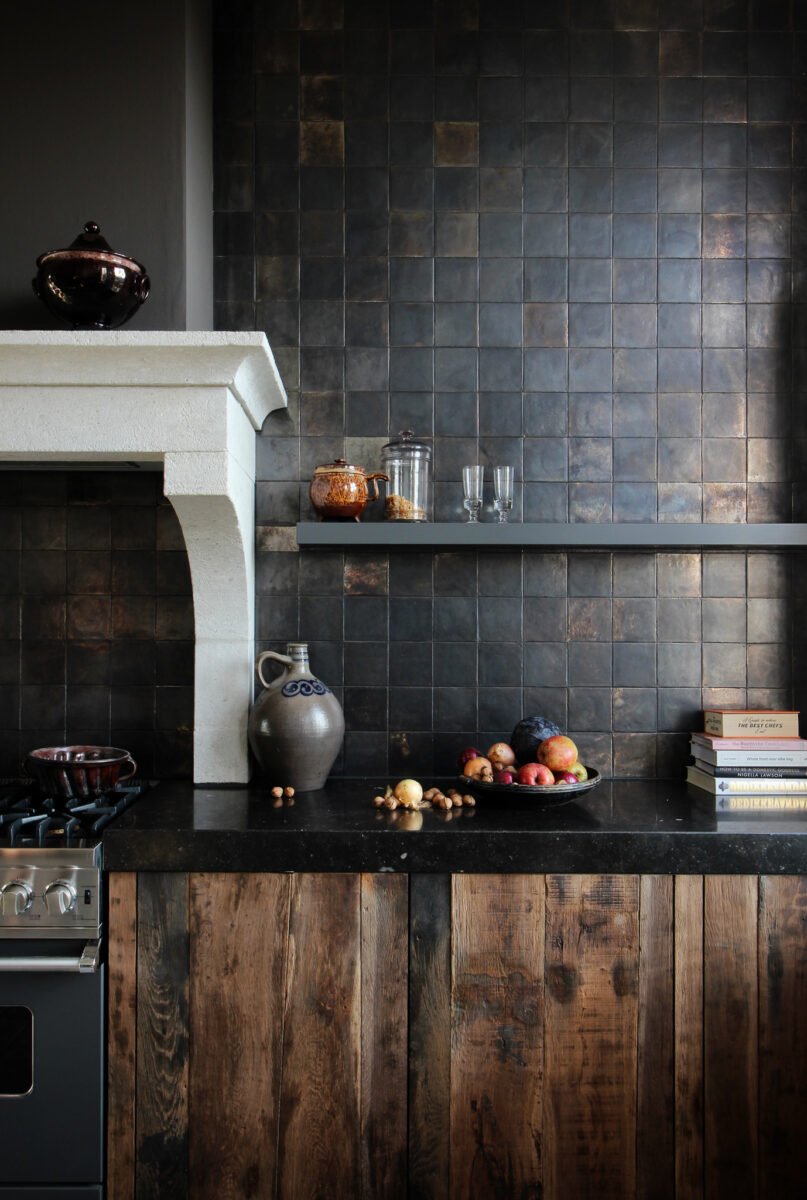
Personalize Open Shelves: If you’re an interior design fan who enjoys Instagram-worthy kitchens, then having open shelves to decorate and design can be a fun way to display your personality and style. You can decorate them not just with your finest Denby plates but also with artwork, plants, and unique personal objects you’ve collected over the years.
Reduce Inaccessible Storage: Let’s face it: can you even reach the top of those upper cabinets? Is it useful or practical storage space? For many individuals, wall cabinets are too high and out of reach. Why bother having them, then?
Save Money: Fewer cabinets equal less money spent. It’s that simple. Opting for an open design can save you a significant amount of money when purchasing kitchen cabinets. Or, with the money saved on fewer cabinets, you could have gorgeous countertop or impressive lighting, that you’ve always wanted.
Disadvantages Of A Kitchen Without Upper Cabinets
Less Functional Storage: The biggest and most obvious disadvantage of having fewer or no upper wall cabinets in your kitchen is the reduced storage space. This can be a deal breaker for some as upper cabinets provide practical and functional storage at a convenient height, especially when shallow cabinets allow for easy access to everything inside.
Emptiness: Depending on the size and layout of your kitchen, the absence of upper cabinets can make the room feel sparse and empty, particularly if there is a lot of space. While the minimalist look can be appealing, too much emptiness can detract from the overall aesthetic.
Additional Cleaning Issue: If you opt for open shelves in place of upper cabinets, you’ll need to be prepared to clean them regularly. Unlike cabinets, which protect their contents from the dust, dirt, and grease that kitchens generate, open shelves will collect all of these elements, resulting in more cleaning work.
Styling Issue: While perfectly styled open shelves or countertop ledges may look great on Instagram, it’s essential to consider your personal style and whether you have any attractive items to display. While a well-curated open shelf can be a stunning display space, it may not necessarily align with your style preferences.
When Minimalism Is Your Passion
If you have no need for additional storage and appreciate a simple, uncluttered aesthetic, consider forgoing your upper kitchen cabinets. Instead, embrace the minimalist look and leave that space empty!
To enhance the overall look of your kitchen, focus on adding a beautiful backsplash or some stylish wall lights. These simple touches can elevate the space and give it a sense of freedom and openness.
Be Sure You’ll Have Enough Storage Space
Although it may seem clear, it’s essential to ensure that you have enough base cabinets, particularly drawers. It’s crucial to consider the type of base cabinets you install and their placement in relation to your work zones and daily activities. Drawers are often more functional than cupboards, particularly for storing frequently used dishes, plates, and pots and pans. So, when selecting your base cabinets, prioritize drawers to maximize your kitchen’s functionality.
Larder or Pantry Cabinets
When there are no upper cabinets in a kitchen, utilizing full height or taller cabinets is a crucial strategy for organization.
A tall larder or pantry cabinet can efficiently store a vast quantity of dry goods or kitchenware, and even accommodate small appliances or built-in appliances that would typically occupy wall cabinets, such as a built-in microwave or coffee machine.
If you’re fortunate enough to have a utility room or walk-in pantry next to your kitchen, these areas can provide excellent additional storage options that allow you to reduce storage space in your kitchen.
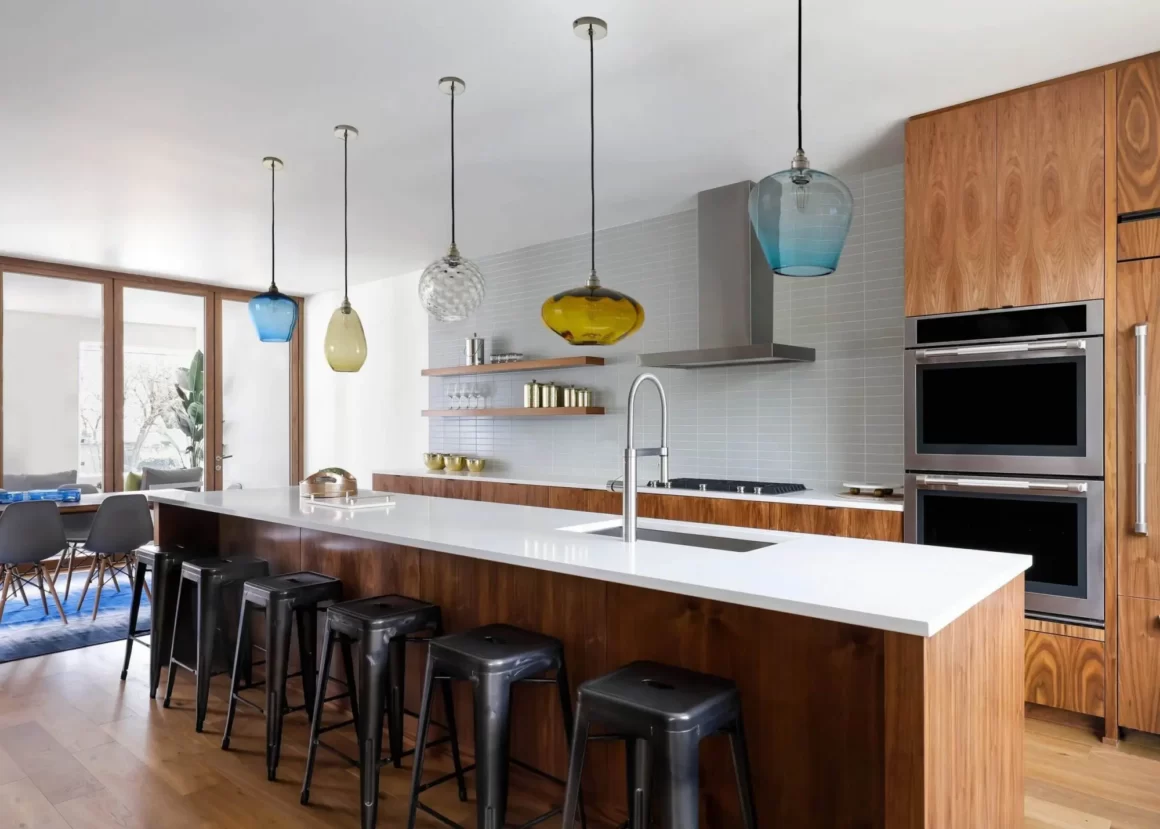
Suppose you desire an open and uncluttered aesthetic or prefer to eliminate wall cabinets from your kitchen. In that case, moving storage and kitchen items or appliances into a nearby utility room can be an excellent solution to achieve the perfect balance of storage and style.
Are They Necessary?
While upper cabinets are not a mandatory component of a kitchen, they can be incredibly useful and essential for numerous homeowners.
Determining whether you require upper cabinets in your kitchen depends on various factors such as the room’s size and shape, your storage requirements, and your personal design style preference. As each kitchen and homeowner is unique, the decision to include upper cabinets will vary based on individual needs and preferences.
Is Kitchen Without Upper Cabinets Practical?
Although the absence of upper cabinets in a kitchen may appear impractical at first glance, it largely depends on your physical ability, lifestyle, and aesthetic preferences. For instance, individuals who are shorter than average may find it challenging to reach items stored in upper cabinets.
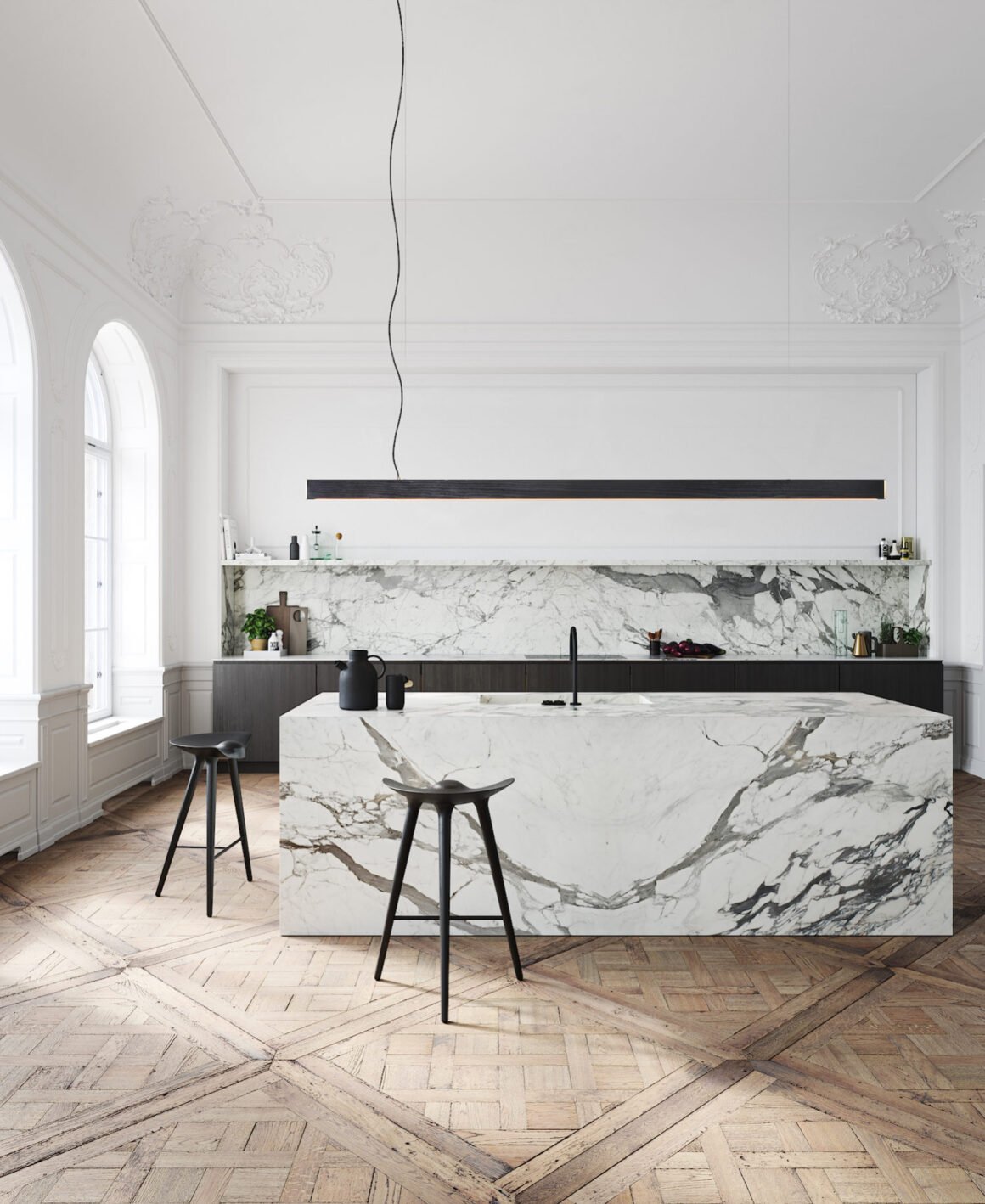
If you live alone or with a partner and don’t require extensive storage space in your kitchen, wall cabinets may be unnecessary. You may prefer a lighter, more open look that complements your aesthetic preferences.
Placing dishes in a deep drawer or pan drawer has become increasingly popular and practical. It makes them more accessible to everyone, eliminating the need to reach up into an upper cabinet, which can be challenging, particularly if the dishes are heavy.
Moreover, by placing dishes in a drawer, you can pull out all the contents towards you, providing better access to everything. There’s no need to move items out of the way to reach the ones stored at the back of the cupboard. Everything is within easy reach, ensuring maximum convenience.
However, for most homeowners and kitchens, upper cabinets are highly practical and make sense. They offer excellent additional storage at a comfortable and practical height for many, enhancing the kitchen’s functionality.
Will This trend Stay For a Long Time?
There you have it – advice, ideas, and practicalities of having a kitchen without upper cabinets.
While it’s undoubtedly a growing trend in kitchen design, it may not be the best choice for everyone. Before completely ditching those wall cabinets, it’s essential to consider how you use your space, your needs, and what is most practical for you.
Although there are practical benefits to not having upper cabinets, this trend can affect functionality, which is hard to beat with design.

